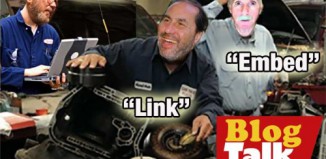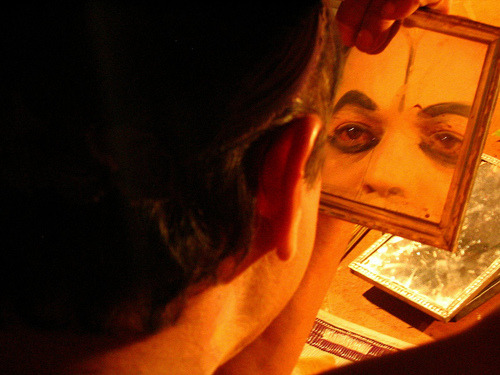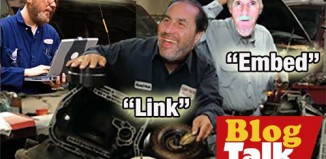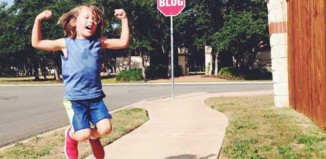Organizers
What’s [Not] in Your Feed Channel?
Don’t Blog Like My Brother
E.T.! It’s Working! #ConnectedCourses
Reflection, Conversation, Co-Learning

When a cohort of learners, who may or may not meet face to face, move through the same material on the same schedule — their blogging and commenting offers individual learners opportunities to learn more about the material by reflecting publicly about what the material means to the them. There are lots of ways to do this. I like (and have adapted) Gardner Campbell’s “nuggets” assignment for course-bloggers who aren’t sure where to begin with reflection. (And when I looked for a good example of a blogging nugget that exemplifies public reflective learning, of course I immediately came across “As we may nugget.”)
Reflecting on material is a path to understanding by an individual learner, but when a group of learners reflect in public, they provide a rich field for conversations about the material. Debates. Conjectures. Contrapositives. Analysis. Conversations can lead to co-learning, when other elements combine to influence groups of learners to be co-responsible for each other’s learning. And co-learning over time can grow into learning communities. 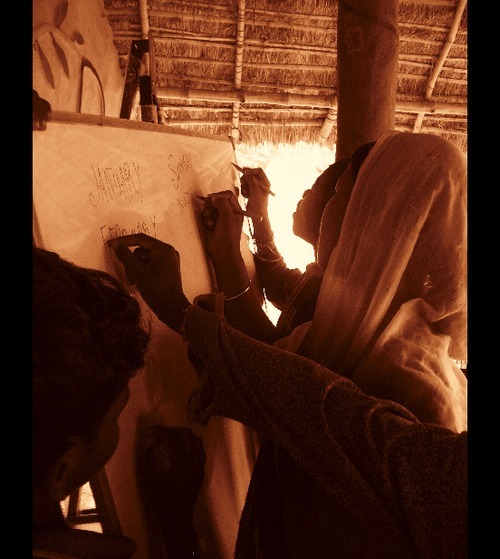
The best courses, from small face-to-face seminars to massive online cohorts, come to life when groups of learners come to know and trust each other enough to co-learn. I have some expertise in a particular aspect of our mutual interest to offer. Others provide to me kinds of expertise that I don’t have. When I know what would interest you, I send it your way. In 1987, I wrote almost exactly the same thing as I’m saying now:
If, in my wanderings through information space, l come across items that don’t interest me but which I know one of my group of online friends appreciate, I send the appropriate friend a pointer to the key datum or discussion. This social contract requires one to give something, and enables one to receive something. I have to keep my friends in mind and send them pointers instead of throwing my informational discards into the virtual scrap-heap. It doesn’t take a great deal of energy to do that, since I have to sift that information anyway in order to find the knowledge I seek for my own purposes. And with twenty other people who have an eye out for my interests while they explore sectors of the information space that I normally wouldn’t frequent, I find that the help I receive far outweighs
the energy I expend helping others: A perfect fit of altruism and self-interest.
I can see now that in my 1987 description of what I now recognize as co-learning communities, I left out one of the essential elements — not just exchanging and gifting bits of information, but striving to make sense of the material together. That’s what I try to encourage my students to do, and it’s been a way of life for me nearly thirty years.
Reflection, Conversation, Co-Learning
Reflection, Conversation, Co-learning Communities

When a cohort of learners, who may or may not meet face to face, move through the same material on the same schedule, their blogging and commenting offer individual learners opportunities to learn more about the material by thinking aloud about what the material means to the them. There are lots of ways to do this. I like (and have adapted) Gardner Campbell’s “nuggets” assignment for course-bloggers who aren’t sure where to begin with reflection. (And when I looked for a good example of a blogging nugget that exemplifies public reflective learning, of course I immediately came across “As we may nugget.”)
Reflecting on material is a path to understanding by an individual learner, but when a group of learners reflect in public, they provide a rich field for conversations about the material. Debates. Conjectures. Contrapositives. Analysis. Conversations can lead to co-learning, when other elements — trust, shared purpose, lead learners, skilled facilitation, serendipity — combine to influence groups of learners to be co-responsible for each other’s learning. And co-learning over time can grow into learning communities.

Whether it is a small face-to-face seminars to a massive online cohorts, a class comes to life when groups of learners come to know and trust each other enough to co-learn. I have some expertise in a particular aspect of our mutual interest to offer. Others provide to me kinds of expertise that I don’t have. When I know what would interest you, I send it your way. In 1987, I wrote almost exactly the same thing as I’m saying now:
If, in my wanderings through information space, l come across items that don’t interest me but which I know one of my group of online friends appreciate, I send the appropriate friend a pointer to the key datum or discussion. This social contract requires one to give something, and enables one to receive something. I have to keep my friends in mind and send them pointers instead of throwing my informational discards into the virtual scrap-heap. It doesn’t take a great deal of energy to do that, since I have to sift that information anyway in order to find the knowledge I seek for my own purposes. And with twenty other people who have an eye out for my interests while they explore sectors of the information space that I normally wouldn’t frequent, I find that the help I receive far outweighs
the energy I expend helping others: A perfect fit of altruism and self-interest.
I can see now that in my 1987 description of what I now recognize as co-learning communities, I left out one of the essential elements — not just exchanging and gifting bits of information, but striving to make sense of the material together. That’s what I try to encourage my students to do, and it’s been a way of life for me nearly thirty years.
Getting ready for the funagogical experience
Next week we start the “pre-course” for Connected Courses, which means that Jim Groom and Alan Levine (the masters) and I (the apprentice), are going to help course participants through the whys and hows of blogging for this course. As I will discuss when I facilitate the Co-learning segment, I’m along to learn as well as help teach, and one of the things I’ve learned is that fun is integral to the design of a course like this. Alan Levine didn’t think our syllabus page looked like fun, and when he and Jim and I discussed what we were going to do, the idea came up of doing a Hangout on Air as a “Blog Talk,” where “Click,” “Embed,” and “Link” could respond to questions posed via the #ccourses hashtag on Twitter — like the public radio program “Car Talk” and its unserious mechanics “Click and Clack.” Alan immediately whipped up a graphic. I was motivated to hunt for an animated GIF for the syllabus page for the Co-learning unit, and to figure out and debug how to post it on a WordPress page.

Getting ready for the funagogical experience
Blogging about Blogging Like a Connected Courses Champion
At The Opposite End of Massive: Individual Connections & Sitting at the Dining Room Table
Connected Courses
 I’m quite pleased to point you to a new online learning experience being put together by a group of amazing educators from the Connected Learning community. Starting September 15th we’re going to be talking about openness and blended learning in a 12 week course that aims to help people run their own connected courses. It’s meta! I love meta.
The coursework will help you understand how we work in the digital space by demystifying the tools and trade of openness. We’ll explore why you might run a Connectivist learning experience, how to get started, how to connect online and offline participants, and how to MAKE things that support this kind of learning.
We’ll talk about building networks, maintaining networks, diversifying networks and living and working in a connected space. We’ll learn together, share ideas and start making action plans for our own connected courses.
You might understand, based on the above, why I’m excited about this. For the past couple of years I’ve been learning how to run connected courses, and I’ve been looking to people like the organizers of Connected Courses for advice, best practices and support. I’ve learned so much about how open online learning can activate and inspire people, and I’ve spent loads of time trying to understand the hows and whys in order to make Webmaker’s #TeachTheWeb program a sustainable engine of learning and support for our community. This course aims to simplify many of the trials and tribulations I’ve had organizing in this educational space, so that anyone can run these experiences and join in on open culture.
Everyone is welcome and no experience is required. The first unit starts on September 15th, but you can sign up now and find more details about the topics we'll be exploring at http://connectedcourses.org
See you there!
I’m quite pleased to point you to a new online learning experience being put together by a group of amazing educators from the Connected Learning community. Starting September 15th we’re going to be talking about openness and blended learning in a 12 week course that aims to help people run their own connected courses. It’s meta! I love meta.
The coursework will help you understand how we work in the digital space by demystifying the tools and trade of openness. We’ll explore why you might run a Connectivist learning experience, how to get started, how to connect online and offline participants, and how to MAKE things that support this kind of learning.
We’ll talk about building networks, maintaining networks, diversifying networks and living and working in a connected space. We’ll learn together, share ideas and start making action plans for our own connected courses.
You might understand, based on the above, why I’m excited about this. For the past couple of years I’ve been learning how to run connected courses, and I’ve been looking to people like the organizers of Connected Courses for advice, best practices and support. I’ve learned so much about how open online learning can activate and inspire people, and I’ve spent loads of time trying to understand the hows and whys in order to make Webmaker’s #TeachTheWeb program a sustainable engine of learning and support for our community. This course aims to simplify many of the trials and tribulations I’ve had organizing in this educational space, so that anyone can run these experiences and join in on open culture.
Everyone is welcome and no experience is required. The first unit starts on September 15th, but you can sign up now and find more details about the topics we'll be exploring at http://connectedcourses.org
See you there! 
![What’s [Not] in Your Feed Channel?](http://connectedcourses.net/wp-content/uploads/2014/09/tv-dial-326x159.jpg)
